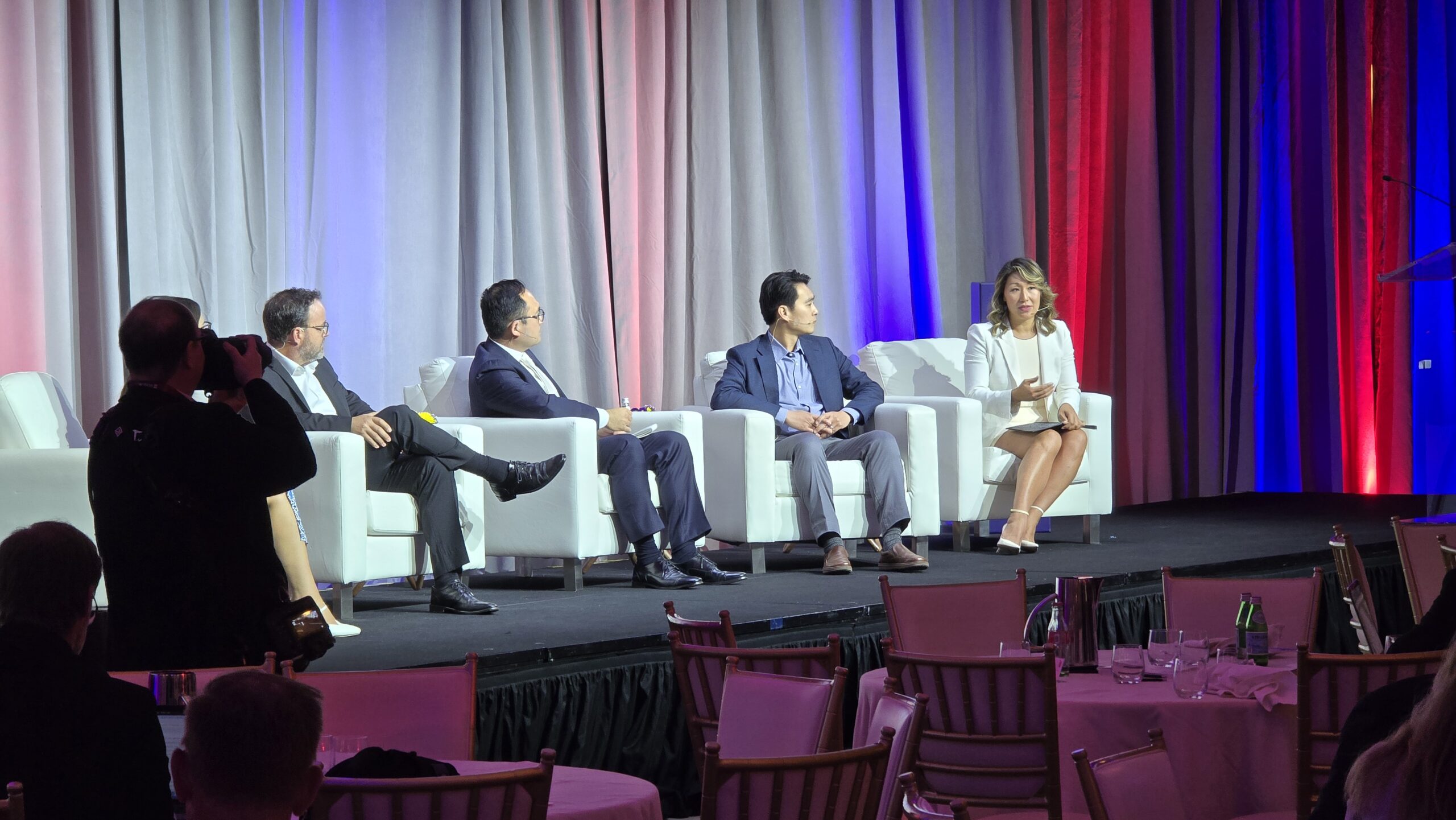Case Study: AI+ Life Sciences – Data, Discovery, and the Future of Health
At the AI+ Science Summit, one panel stood out for its blend of bold vision and ground-level clarity: “Case Study – AI+ Life Sciences.” Moderated by SCSP’s Karina Barao, the discussion brought together top minds, Kathryn Wang (Sandbox AQ), Johnny Yu (Tahoe Therapeutics), Davis Fuller (Artificial), and Henry Lee (Cultivarium), to dissect how artificial intelligence is remaking the vast, high-stakes world of life sciences.
Building Blocks: Data is Destiny
From the outset, panelists converged on a theme that could double as a mantra for any sector crossing the digital rubicon: quality, standardized data is the wellspring of modern AI. Davis Fuller of Artificial noted that wherever life sciences has made real headway protein models, genomics, drug design—the secret was foresight in data stewardship. “The models will come,” he said, “if the data is there.”
Yet, as several pointed out, the sector is a patchwork: islands of well-encoded, abundant data (think protein folding) sit next to deserts where standards and aggregation lag. The endgame for policy and industry? Build data infrastructure now or face downstream limits, no matter how clever your AI models become.
Agents in the Lab: Automation Meets Intuition
If data sets the stage, AI-powered agents are beginning to work the spotlight. Fuller described Artificial’s new approach: natural language lab assistants (or “agentic swarms”) that turn a scientist’s intent into operational instructions for wet lab automation. The result is dramatic acceleration, from idea to experiment—with the promise that AI agents become trusted teammates, enhancing rather than replacing human expertise.
Tahoe Therapeutics’ Johnny Yu took this one step further, introducing “virtual cell” models powered by record-shattering single-cell datasets. Notably, their AI tool “Tahoe Dive” allows biologists to virtually “ask questions” of their huge cell data troves, AI as the collaborative explainer, not just the backend black box. The research community, Yu noted, has gone from a handful of specialists to thousands engaging with complex, custom analyses in an instant.
Quantum AI: Not Just for the Sci-Fi Novels
Kathryn Wang from Sandbox AQ spotlighted how marrying AI with quantum-inspired models and high-performance sensors is redefining biomedical prediction and diagnosis, especially in data-sensitive domains like neurodegenerative and cardiovascular diseases. One critical gain: AI/quantum hybrids can sift meaningful signals from hospital data cacophony, with the precision to distinguish, say, Parkinsonian tremors from elevator noise. It’s where deep math meets clinical urgency.
The Curious Case of Non-Model Organisms
But what if your data isn’t from “model” species at all? Henry Lee at Cultivarium is betting on the untapped biological universe, microbes and organisms just outside standard lab focus. They use AI both to design new genetic parts and to mine the literature for “lost knowledge”, that vast, sometimes unindexed trove of experiments and protocols omitted from formal publications. With smarter data capture and better AI tools, even obscure science becomes tractable.

The (Very Near) Future: Standardization, Agents, and Empowerment
Looking ahead, the panel shared several crisp (and sometimes contrarian) projections:
- Data Standards are Not Optional: True agentic AI, automated systems that reason and act, demands digital experiment protocols, global data schemas, and above all reproducibility. Without this, science stalls in its own progress.
- Virtual Cells Will Reshape Drug Discovery: The ability to simulate molecular pathways, iterate on drug candidates, and forecast biochemical side effects will be a competitive differentiator for both companies and nations.
- AI’s Real Leap Forward is Psychological: Kathryn Wang challenged prevailing automation anxieties, arguing that “the biggest leap is not technology, it is psychological.” AI isn’t about trimming jobs, but unlocking scientific creativity at scale, even for non-traditional or young researchers.
- Private Sector is Leading the Edge: Despite massive federal funding, pivotal breakthroughs in bio-AI data aggregation and applications are increasingly driven by startups. The question for policymakers: how to incentivize, supplement, and regulate this ecosystem to keep the U.S. ahead, without stifling innovation.
Closing Wisdom: Curiosity is the Killer App
The convergence of quantum science, AI agents, and virtual biology signals a future where data, tools, and creativity are democratized. The panel urged everyone, not just career scientists, to “activate their inner researcher,” empowered by AI tools that translate curiosity into impact.
As federal agencies and policymakers contemplate new standards, and as venture-backed labs drive vanguard advances, one constant shines through: the next decade of health and biotech isn’t simply about faster chips or flashier models, but about building systems that let every question be asked, and answered, in ways never previously imagined.
For more information, please visit the following:
Website: https://www.josephraczynski.com/
Blog: https://JTConsultingMedia.com/
Podcast: https://techsnippetstoday.buzzsprout.com
LinkedIn: https://www.linkedin.com/in/joerazz/


Leave a Reply
You must be logged in to post a comment.